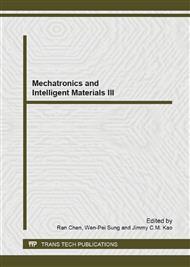p.1782
p.1786
p.1790
p.1795
p.1799
p.1805
p.1810
p.1814
p.1818
Research on Nonlinear Numerical Simulation Method of Icing Conductor on Galloping
Abstract:
In this paper,the models of the conductors are constructed by finite element method with a three-node, isoparametric cable element. Two numerical simulation methods that include the 4th order Runge-Kutta (referred to as R-K) method and improved time integration method on galloping are studied, and the numerical results on galloping are given by using those two methods by programming. The study result shows that dynamic responses simulated on galloping by using 4th order R-K method and improved time integration method are in good agreement in this paper, but the efficiency of improved time integration method is higher. Result of this paper can provide beneficial reference for galloping simulation calculation.
Info:
Periodical:
Pages:
1799-1804
Citation:
Online since:
June 2013
Authors:
Keywords:
Price:
Сopyright:
© 2013 Trans Tech Publications Ltd. All Rights Reserved
Share:
Citation:


